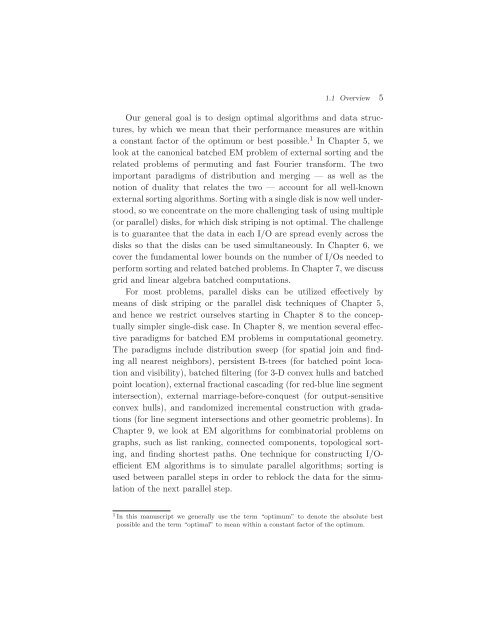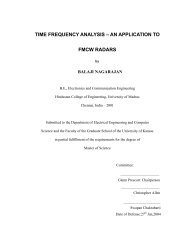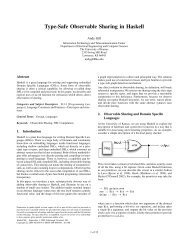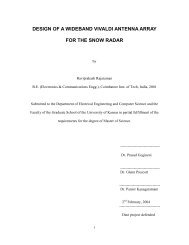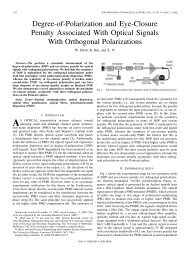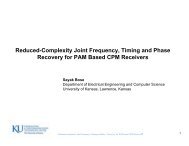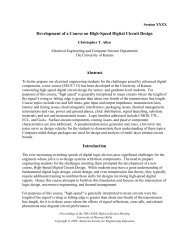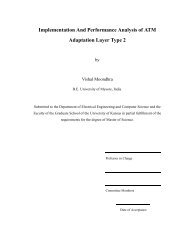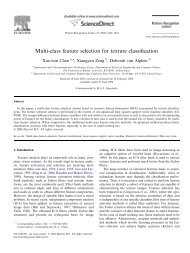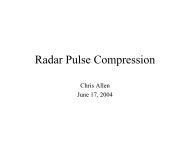Algorithms and Data Structures for External Memory
Algorithms and Data Structures for External Memory
Algorithms and Data Structures for External Memory
You also want an ePaper? Increase the reach of your titles
YUMPU automatically turns print PDFs into web optimized ePapers that Google loves.
1.1 Overview 5<br />
Our general goal is to design optimal algorithms <strong>and</strong> data structures,<br />
by which we mean that their per<strong>for</strong>mance measures are within<br />
a constant factor of the optimum or best possible. 1 In Chapter 5, we<br />
look at the canonical batched EM problem of external sorting <strong>and</strong> the<br />
related problems of permuting <strong>and</strong> fast Fourier trans<strong>for</strong>m. The two<br />
important paradigms of distribution <strong>and</strong> merging — as well as the<br />
notion of duality that relates the two — account <strong>for</strong> all well-known<br />
external sorting algorithms. Sorting with a single disk is now well understood,<br />
so we concentrate on the more challenging task of using multiple<br />
(or parallel) disks, <strong>for</strong> which disk striping is not optimal. The challenge<br />
is to guarantee that the data in each I/O are spread evenly across the<br />
disks so that the disks can be used simultaneously. In Chapter 6, we<br />
cover the fundamental lower bounds on the number of I/Os needed to<br />
per<strong>for</strong>m sorting <strong>and</strong> related batched problems. In Chapter 7, we discuss<br />
grid <strong>and</strong> linear algebra batched computations.<br />
For most problems, parallel disks can be utilized effectively by<br />
means of disk striping or the parallel disk techniques of Chapter 5,<br />
<strong>and</strong> hence we restrict ourselves starting in Chapter 8 to the conceptually<br />
simpler single-disk case. In Chapter 8, we mention several effective<br />
paradigms <strong>for</strong> batched EM problems in computational geometry.<br />
The paradigms include distribution sweep (<strong>for</strong> spatial join <strong>and</strong> finding<br />
all nearest neighbors), persistent B-trees (<strong>for</strong> batched point location<br />
<strong>and</strong> visibility), batched filtering (<strong>for</strong> 3-D convex hulls <strong>and</strong> batched<br />
point location), external fractional cascading (<strong>for</strong> red-blue line segment<br />
intersection), external marriage-be<strong>for</strong>e-conquest (<strong>for</strong> output-sensitive<br />
convex hulls), <strong>and</strong> r<strong>and</strong>omized incremental construction with gradations<br />
(<strong>for</strong> line segment intersections <strong>and</strong> other geometric problems). In<br />
Chapter 9, we look at EM algorithms <strong>for</strong> combinatorial problems on<br />
graphs, such as list ranking, connected components, topological sorting,<br />
<strong>and</strong> finding shortest paths. One technique <strong>for</strong> constructing I/Oefficient<br />
EM algorithms is to simulate parallel algorithms; sorting is<br />
used between parallel steps in order to reblock the data <strong>for</strong> the simulation<br />
of the next parallel step.<br />
1 In this manuscript we generally use the term “optimum” to denote the absolute best<br />
possible <strong>and</strong> the term “optimal” to mean within a constant factor of the optimum.


